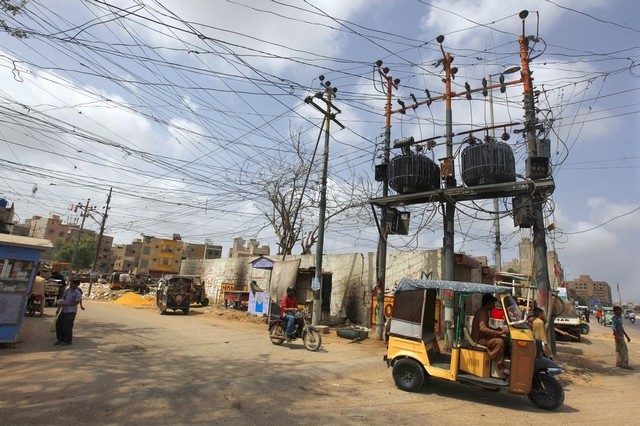
“The circular debt is still a major issue confronting the power sector. Receivables of the distribution sector increased by more than Rs120 billion during 2014-15, of which increase of Rs75 billion was due to the private sector,” said Nepra.
The increased circular debt included dues of Rs43.97 billion that were to be paid by K-Electric.
Moreover, the high T&D losses of distribution companies (DISCOs) also contributed to the debt. “The authority had set an average loss target of 15.29% for 2014-15, whereas losses of DISCOs remained at around 18.73%.”
Based on the notified end-consumer tariff of June 10, 2015, the report said, if DISCOs failed to show any improvement, the impact of missing the T&D loss target would result in an annual gap of Rs41 billion.
The recoveries from agriculture connections were also a major contributor to the debt. “This cannot be resolved until provincial governments lend active support to DISCOs,” it said.
“The federal government needs to pay attention to creating a smooth payment mechanism from government connections, especially in Sindh and Azad Jammu and Kashmir.”
The receivables from AJK surged to Rs15 billion in the year under review while another Rs13 billion was outstanding against provincial governments (especially the Sindh government).
Poor transmission system
Nepra said it was satisfying to note that the power generation sector had been drawing due attention but strengthening the T&D sector was equally critical.
“One of the major problems is its overloaded networks which not only hinders power transfer capability but also adds to wastage of electricity through increased losses,” it said.
“The constraints to transmission networks have also led to severe power evacuation problems due to which capacities of some of the most efficient plants cannot be utilised to their optimum level.”
“Therefore, addition of new generation facilities of around 8,000 megawatts by June 2017 and strengthening of existing transmission system requires a large-scale investment in this area, besides hugely improved managerial performance of the National Transmission and Distribution Company,” the report highlighted.
“Although the targeted addition of 8,000MW is quite ambitious, yet it is achievable, as this planned capacity includes solar and wind projects, 3,600MW from re-gasified liquefied natural gas-based projects and the under-construction hydropower projects at Tarbela and Neelum-Jhelum.”
K-Electric
“K-Electric, despite having the generation capacity, is continuously carrying out load-shedding for certain categories of consumers,” Nepra said in its report.
“Although the company has been reporting satisfactory performance in relation to Nepra’s performance standards, the crisis in K-Electric territory in June 2015 has proven otherwise.”
The findings of Nepra’s fact-finding team recommended reasonable investment specifically in the T&D networks.
Published in The Express Tribune, May 31st, 2016.
Like Business on Facebook, follow @TribuneBiz on Twitter to stay informed and join in the conversation.
-(1)1717678110-0/Kendrick-(1)-(1)1717678110-0-405x300.webp)
















COMMENTS (1)
Comments are moderated and generally will be posted if they are on-topic and not abusive.
For more information, please see our Comments FAQ